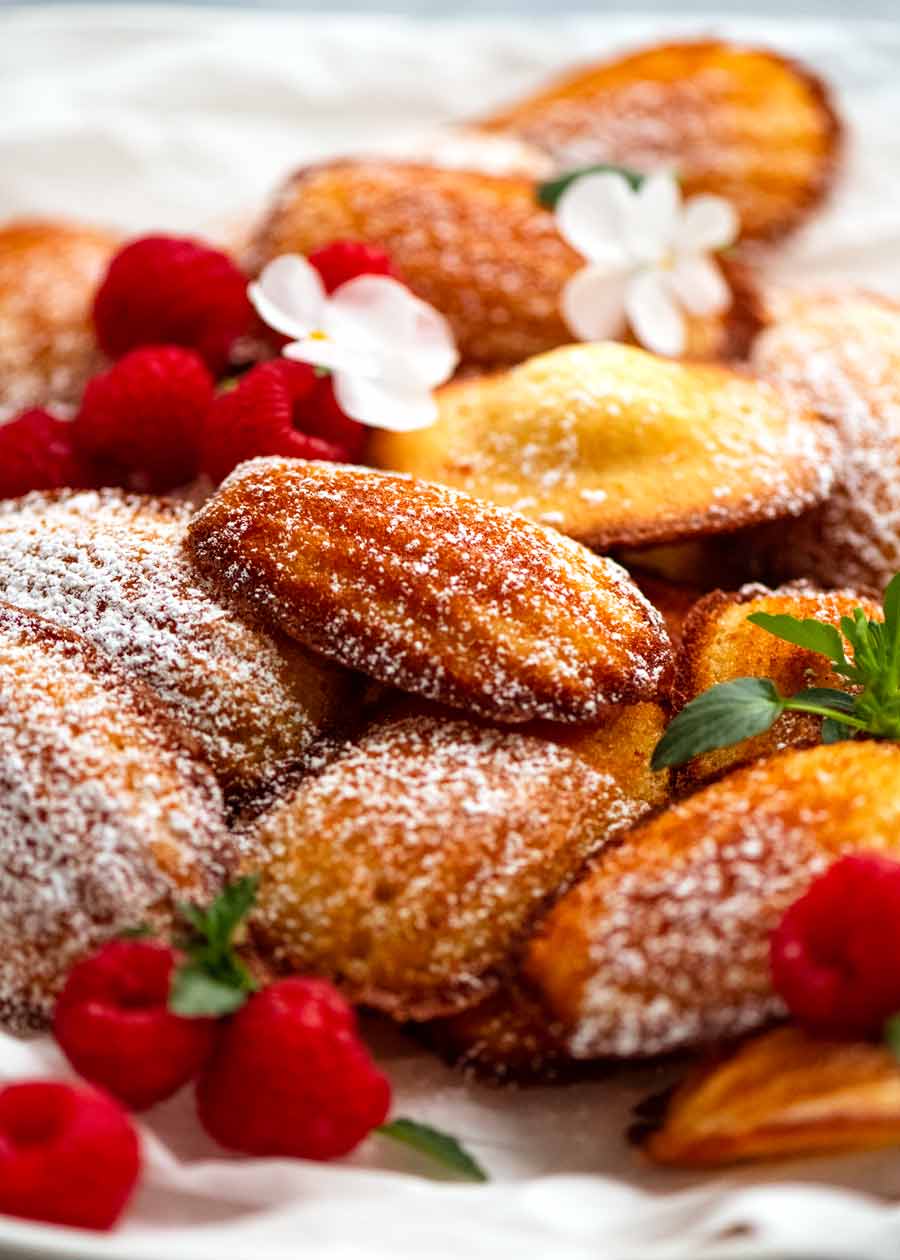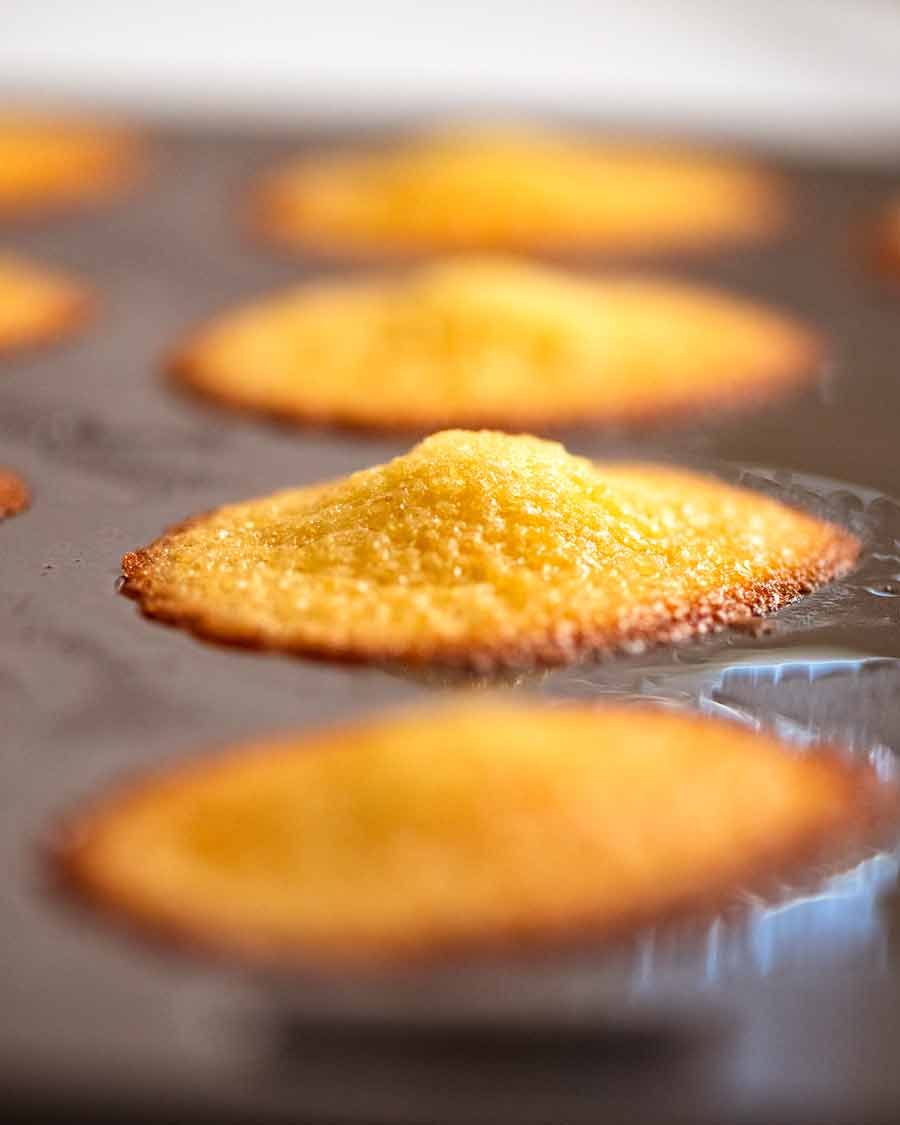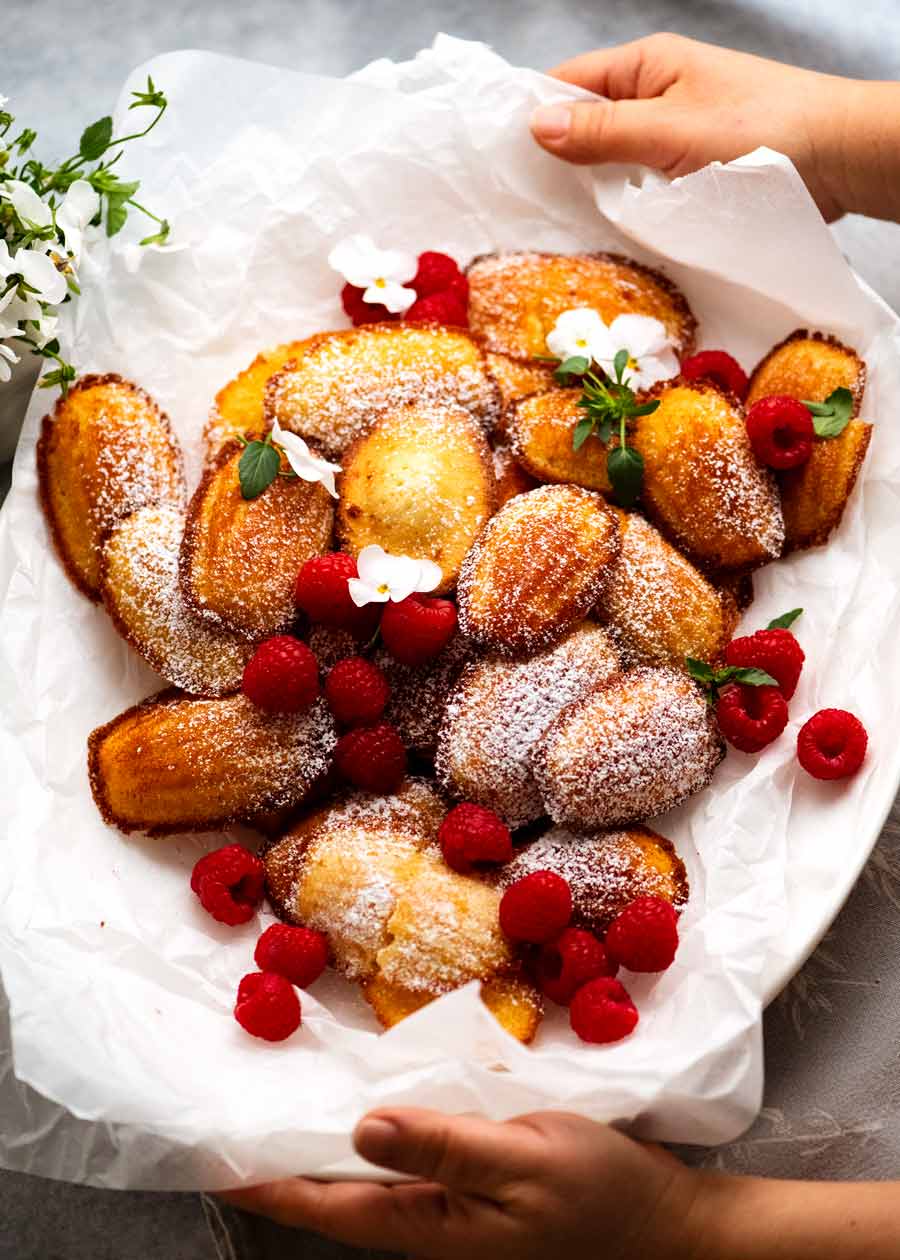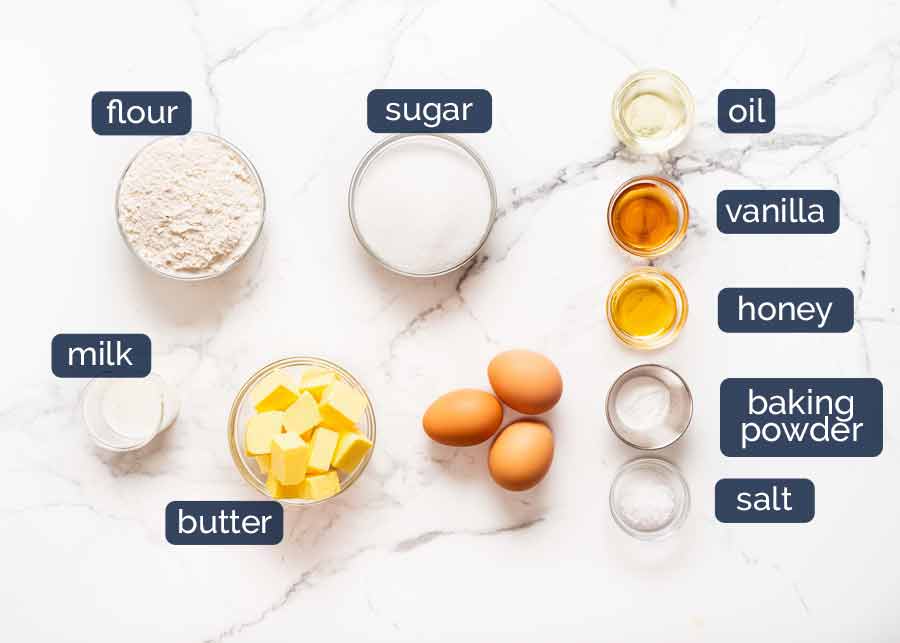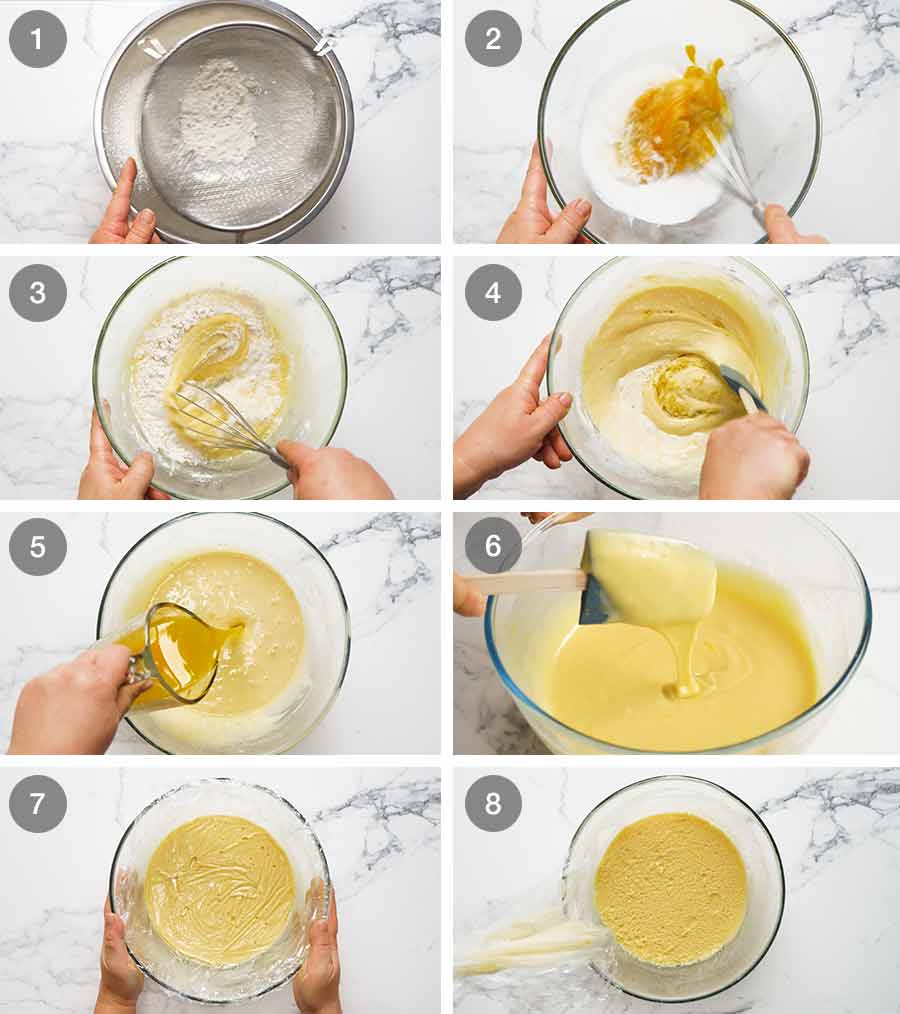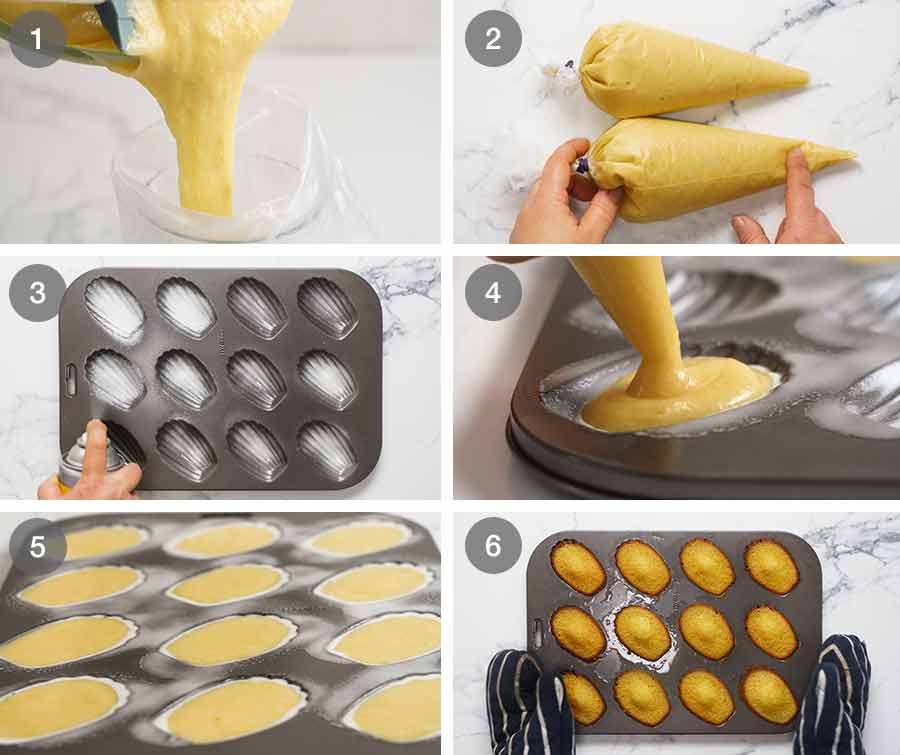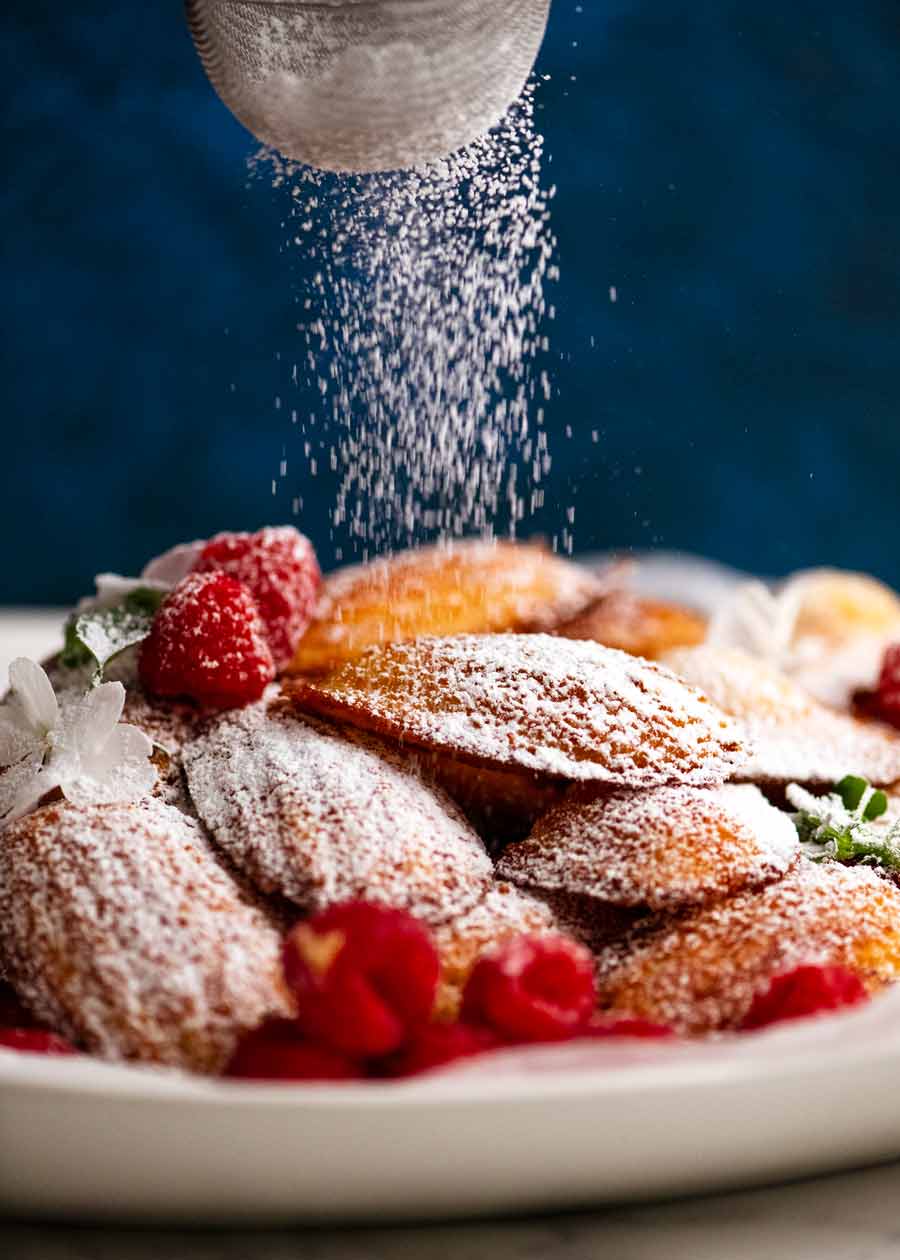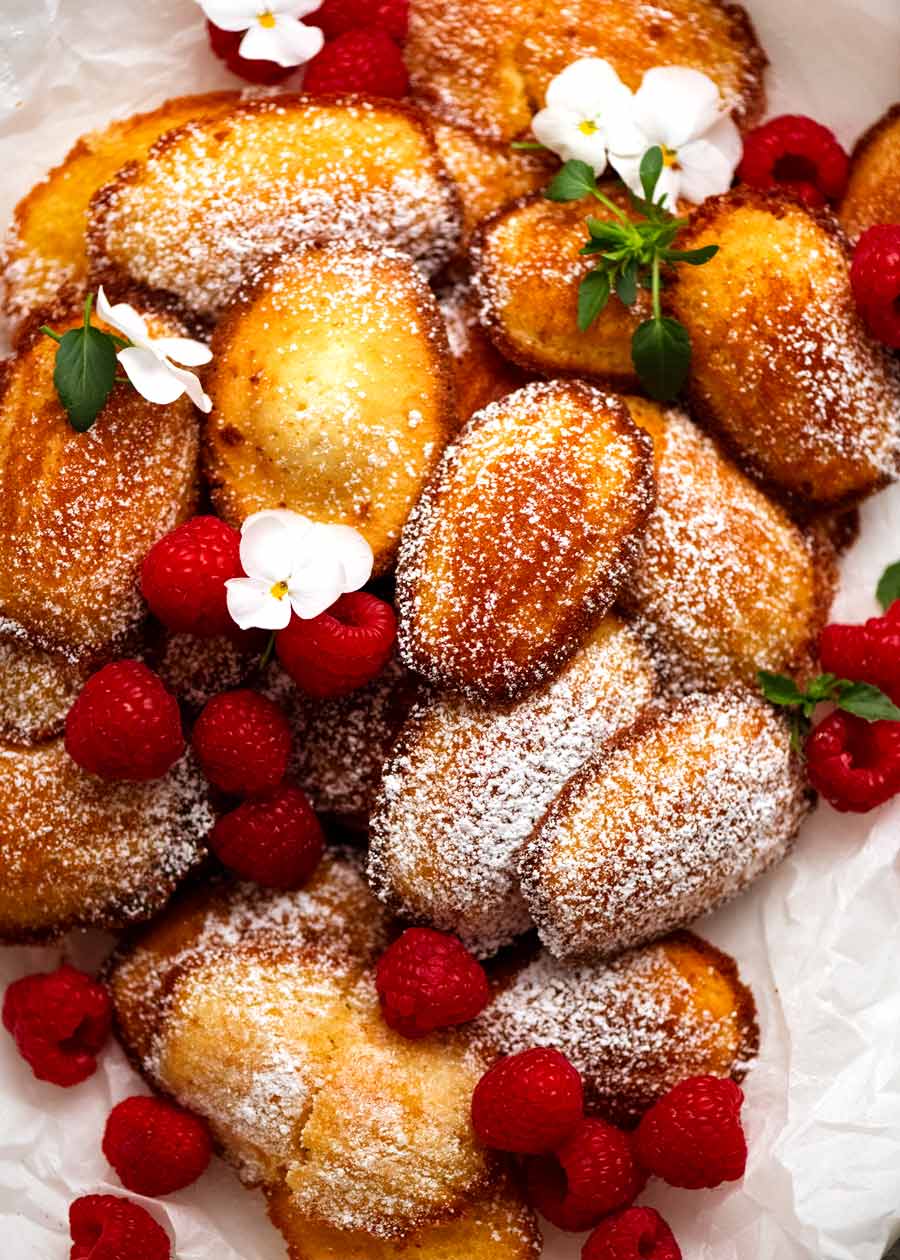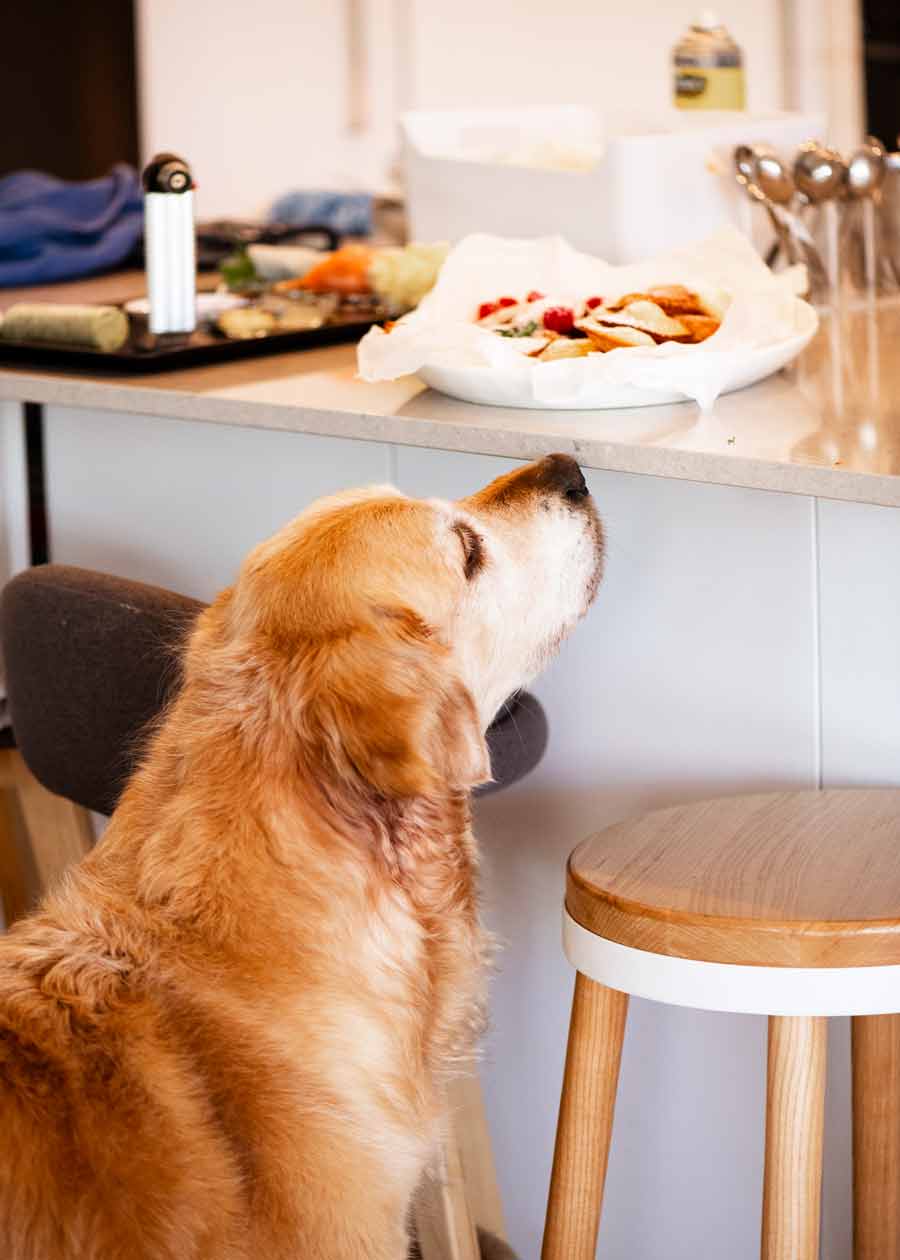Madeleines
It’s another classic French baking recipe courtesy of Chef Jean-Baptiste! Boy was he determined to get this one just perfect. The reputation of his motherland is on the line here, after all!! There were many, many Madeleines made in the quest to perfect this recipe and find answers to all the what-ifs in the making. We aren’t fussy around these parts… not at all! 😂
So what makes a perfect Madeleine, according to a French chef?
A tender, elegant crumb with fine, delicate holes. Not large, crude, irregular-sized holes. We aren’t making sourdough here!It is soft and moist on the inside while just-crisp on the edges;There’s a signature, plump doming shape in the middle. This is a sign of a well-baked Madeleine!It’s buttery in a melt-in-your-mouth way, not a greasy way. It’s sweet but not overly so, and flavoured with the lightest touch of citrus; andIt’s a light golden colour on the top, and a deeper golden on the underside with the distinct, signature shell grooves.
I think we got to Madeleine #226 before he finally conceded that Batch #1 was indeed the best. Isn’t it always the way? 😂 (PS. Chef JB also wants me to pass on that you might find Madeleines on the internet with bigger humps. However a bigger hump = thicker batter = drier Madeleines. It is all about finding the right balance, he says, ie. The best hump with the most moist crumb inside.👌🏻)
What you need for Madeleines
Here’s what you need to make Madeleines – though note that I accidentally left out lemon zest in this photo!!
Flour – Just plain flour / all purpose flour. Though I haven’t tried, self raising flour should work too (skip the baking powder);Sugar – Caster / superfine sugar works best here because it dissolves more easily into the batter. However, granulated / ordinary white sugar will work ok too;Baking powder – This is what makes the batter rise and makes the crumb beautifully light and fluffy.Check baking powder is still good – If your baking powder has been sitting in the dark depths of your cupboard for a while, it’s best to check it’s still good – see here. Baking powder can be dead even if it’s not past the due date.Eggs at room temperature – The eggs need to be at room temperature and not fridge-cold, to ensure it incorporates properly into the batter easily. A quick way to warm up fridge-cold eggs: Place eggs in a large bowl, cover with warm tap water (just warm, not hot) and leave for 5 min. Wipe dry, then use per recipe. Egg size (“large eggs”): 50 – 55g / 2 oz per egg is the industry standard of sizes sold as “large eggs” in Australia and the US. If your eggs are significantly larger or smaller in size, just weigh different eggs and use 150-165g / 6 oz in total (including shell) or 135 – 150g / 5.4 oz in total excluding shell (useful if you need to use a partial egg to make up the total required weight. Crack eggs, beat whites and yolks together, THEN pour into a bowl to measure out what you need);Butter – The butter is melted so no need to soften to room temperature;Vanilla extract – Extract is better than essence which is artificial. Use the best you can afford, for the best flavour;Honey – For a touch of flavour;Lemon zest – A hint of citrus flavour is traditional, and it really does give them the perfect finishing touch!Salt – A pinch of salt in sweet baked goods is always a good thing. You can’t (shouldn’t!) be able to taste the saltiness, it’s there to help bring out flavour.
How to make Madeleines
The traditional way to make Madeleines is to refrigerate the batter overnight which allows the batter to chill and thicken so when you bake them, you get the signature bump on the surface. You can even freeze the batter for 2 months! Check baking powder is still good – If your baking powder has been sitting in the dark depths of your cupboard for a while, it’s best to check it’s still good – see here. Baking powder can be dead even if it’s not past the due date. Egg size (“large eggs”): 50 – 55g / 2 oz per egg is the industry standard of sizes sold as “large eggs” in Australia and the US. If your eggs are significantly larger or smaller in size, just weigh different eggs and use 150-165g / 6 oz in total (including shell) or 135 – 150g / 5.4 oz in total excluding shell (useful if you need to use a partial egg to make up the total required weight. Crack eggs, beat whites and yolks together, THEN pour into a bowl to measure out what you need); Because of this, they make for a terrific treat to bake to order. Have the batter sealed in a piping bag. Then it literally takes 40 seconds to pipe them into the pan and pop them in the oven, then you’re just 10 minutes away from freshly cooked Madeleines! (Oh ok fine, it might take you 90 seconds, or 2 minutes. But you get my point – it’s fast!)
Part 1: The Madeleines batter
Part 2: Baking
When and how to serve Madeleines
Ask the French, and they’ll tell you Madeleines are typically served for afternoon tea. Ask me, and I’ll tell you there’s a place for Madeleines at any time of the day. Morning tea, afternoon tea, as a freshly-baked dessert after dinner (this was received extremely well in my case!) … like I said, any time! And honestly, try telling me you could resist if I put a plate of these out at breakfast? Anyone who says they could is either made of stone – or a liar!😂 – Nagi x
Watch how to make it
Life of Dozer
That sweet buttery smell….
